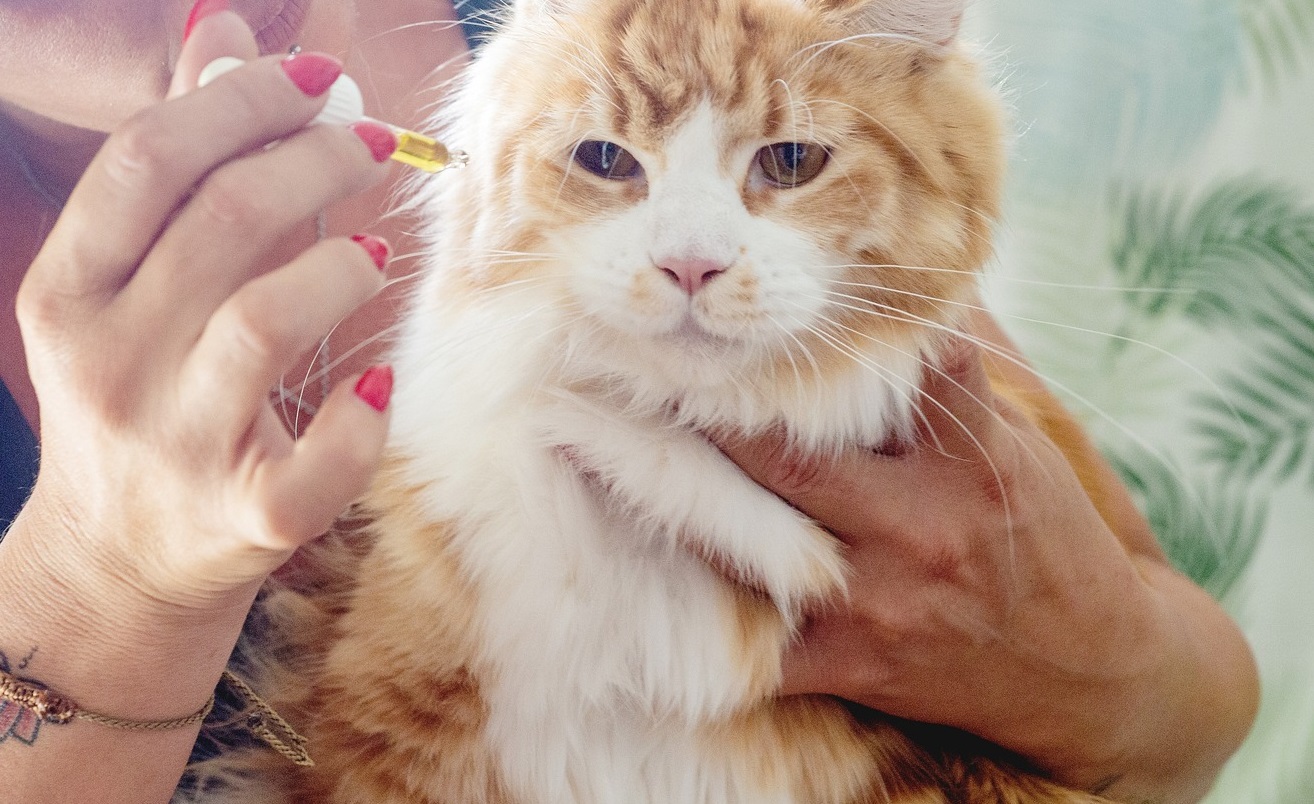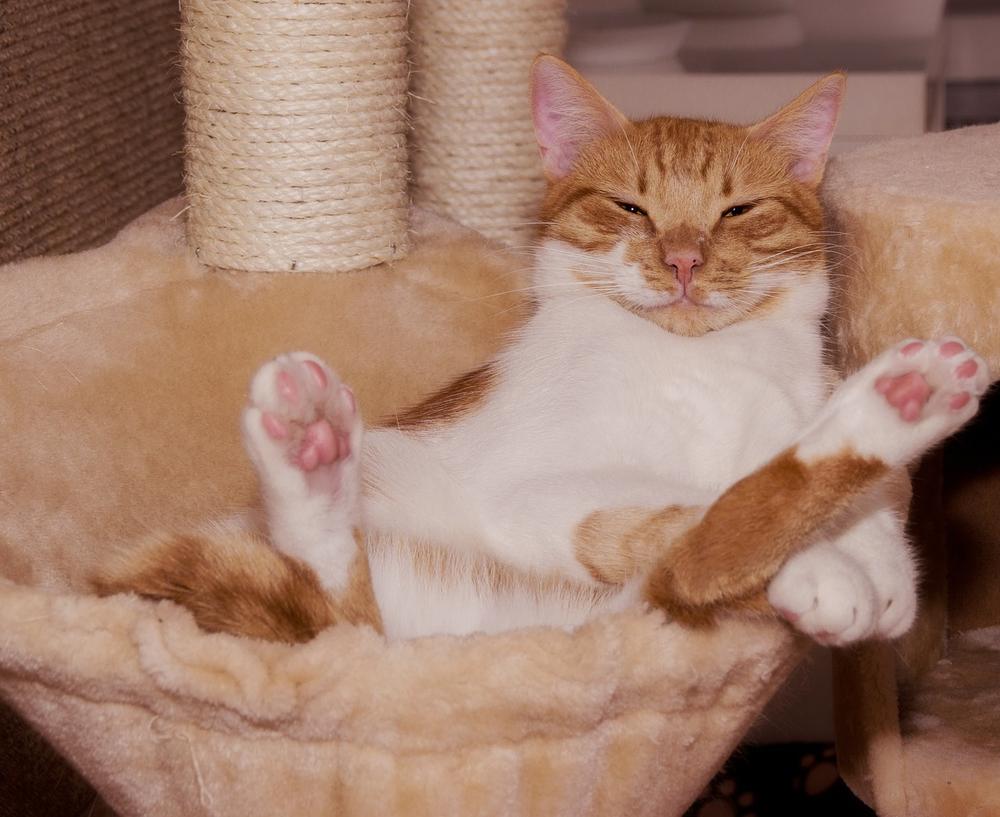How to Hold a Cat Without Getting Scratched (Proper Technique)

Struggling to hold your furry furball without turning into a human scratching post?
Worried your loving embrace may end in a not-so-loving scratch? 🐾
I understand, trust me.
Imagine this:
You're cradling your precious cat, heart racing, palms sweaty, and just praying those claws stay retracted.
But fear not, I've got your back.
Let's dig our claws into the art of holding a cat without feeling like you've been in a wrestling match.
Ready?
Let's dive in.
How to Get a Cat Used to Being Picked Up
When it comes to getting a cat used to being picked up, here are some important things to remember.
- Watch their body language carefully. Cats communicate through how they hold themselves and their faces, so you need to pay attention to how they react physically. Look out for signs of discomfort or stress like flattened ears or a tense body.
- Start with small steps. Begin by letting the cat sniff your hand and get familiar with your smell. Then gently place your hand under their belly, supporting them but without lifting them off the ground. Increase the time you hold them as they become more comfortable.
- Be patient and consistent. Every cat is unique, and it takes time and trust-building for them to get used to being held. Practice regularly, but don't rush it. Sudden movements or trying to force contact can cause trauma and setbacks.
- Use positive reinforcement. Give treats and praise when they successfully let you hold them. This helps create a positive connection with the experience and makes the cat feel safe and secure in your arms.
- Respect their boundaries. Not all cats enjoy being held for long periods, so it's important to know when they've had enough. Pay attention to any distress signals and gently release them when needed.
To get a cat used to being picked up, you need to build a bond of trust and respect.
Take your time, be patient, and follow the cat's lead during interactions. 😺
And finally, if you've noticed your feline friend holding on to your hand, you might be wondering why.

It's a common behavior that many cat owners experience.
If you're curious to understand the reasoning behind this adorable action, I encourage you to read my blog post Why Does My Cat Hold My Hand.
In it, I delve into the possible explanations and provide insights to satisfy your inquisitive mind.
Take a moment to check it out and discover the intriguing reasons behind this endearing gesture.
Optimal Timing for Picking Up Your Cat
When it comes to picking up your cat, timing is key.
Here's what you need to know:
- Watch how they're acting - Keep an eye on their body language like soft blinks, relaxed posture, and purring. These signs mean they're in a good mood and more likely to be receptive to being picked up.
- Take it slow and steady - Approach your cat calmly and avoid sudden movements that might startle them. Move around them at a leisurely pace, giving them time to get used to your presence.
- Pick a peaceful moment - It's best to scoop up your cat when they're already feeling calm and relaxed. Don't try to pick them up if they seem agitated or annoyed, as this could end with scratches or bites.
- Respect their personal space - If your cat shows any signs of distress or anger, stop trying to pick them up right away. It's important to honor their boundaries and not force physical contact if they're not comfortable with it.
- Learn their love language - Figure out what your cat is saying with their different meows. This will help you understand their mood and decide whether it's the right time to give them a lift.
Every cat is one-of-a-kind, so you've got to be patient and attentive to their unique behaviors and preferences.
And it gets even better...
There are specific techniques you can use to pick up your cat without getting scratched.
Follow these guidelines to ensure a safe and comfortable experience for both you and your feline friend...
How to Pick Your Cat Up
Approach the cat calmly and from the side
So, you want to know how to pick up your cat.
First things first, approach them slowly and from the side.
You don't want to startle them, right?
Sneak up on them like a ninja rather than pouncing from above like a scary predator.
Lift them up with care and avoid the scruff
Now that you've approached your furry friend, let's lift them up gently.
But hold your horses!
Don't just grab them in any old way.
Grabbing them by their scruff, legs, or tail is a big no-no.
It's not cool, man!

Instead, follow these steps:
Place one hand under their chest while supporting their back end with the other, and then carefully lift them up.
Cat bites got you down? Seek medical attention!
If your cat happens to bite or scratch you, pay close attention to how your body reacts.
If you notice symptoms like swelling, pus discharge, fever, or increasing pain, it might be time to seek some medical help.
Don't mess around when it comes to cat bites, okay?
Oh, and here's a little tip for you.
Cats love getting their outer ears gently massaged.
So, once you have them safely in your arms, give those fuzzy ears a nice little rubdown with your thumb and forefinger. They'll purr like crazy. Trust me on this one.
But hold on, there's more to learn about holding your cat without getting scratched!
Let me show you some expert techniques...
Hands Under Chest and Abdomen
Cats love it when you gently touch their chests, abdomens, and legs.
To hold your cat correctly, follow these steps:
- Slide both of your hands under their chest and abdomen.
- Make sure to evenly support them.
- This way, they feel secure because you're applying even upward pressure on their chest.
But wait!
Before doing any of this, make sure to gradually introduce your furry friend to this technique.
Give them time to adjust so they can feel comfortable in your loving embrace.
And hey, accidents happen, right?

If you happen to get bitten or scratched, don't stress too much.
Just clean the affected area with soap and water. Cover those little bleeding wounds with some reliable medical gauze.
And maybe consider adding a little antibacterial ointment.
Now, let's say the worst-case scenario occurs and you get bitten by a feral cat.
Ouch!
It's probably best to be cautious and seek medical attention. Nobody wants to deal with the potential transmission of diseases. 🐾
Gradual and Gentle Paw Lifting
To familiarize your cat with the sensation of being partially lifted, gently lift its front paws off the ground while keeping its hind paws stable.
Then, progress to lifting the cat's paws one by one, starting with the front and then moving to the hind legs.
Remember, you should introduce gentle lifting by lifting the front paws and keeping the hind ones stable.
Please bear in mind that cats usually don't like having their paws touched or manipulated, so it's best to avoid it whenever possible.
How to Carry and Hold a Cat
When it comes to handling and holding a cat, there are a few important things you need to bear in mind.
First off, always remember to keep the cat close to your body.
This prevents them from wiggling too much or feeling uncomfortable.
To avoid painful scratches and potential infection, use two hands.
Place one hand supporting the chest and front legs, while the other supports the hind legs.
By doing this, you ensure that the cat feels supported and secure.

Speaking of making your cat feel secure, try talking to them in a soothing voice.
This can help keep them calm during the handling process.
However, be mindful of areas that some cats dislike being touched, like the groin or armpits. Respect their boundaries and focus on petting their preferred spots, such as the back of the neck, chin, cheeks, and behind the ears.
When transporting a cat, hold them under the front legs with one hand, and support their hind legs with the other.
Cradle their hindquarters in the crook of your arm to provide extra support.
Oh, and don't forget, if your cat shows symptoms of Cat-scratch Disease, seek immediate medical attention. It's better to be safe than sorry.
In conclusion, handle your cat gently, be mindful of their preferences, and pay attention to their mood through tail movements. With these tips, your feline friend will feel safe and loved in your arms.
Effective Cat Holding Techniques to Avoid Scratches
Key Takeaways:
- Pay attention to a cat's reactions and comfort level during physical contact.
- Let the cat guide the interaction and gauge when they've had enough.
- Training a cat to be held requires patience, consistency, and trust-building.
- Start by allowing the cat to sniff your hand before attempting to hold it.
- Gradually increase holding time as the cat becomes more comfortable.
- Repetition is necessary for rescue cats resistant to being carried.
- Reward with treats and encouragement during the training process.
- Consult a veterinarian if the cat has any injuries or illnesses.
- Cats are more likely to enjoy physical contact after initiating it themselves.
- Move slowly and steadily around the cat to avoid startling or alarming them.
- Choose a calm and relaxed moment to hold a cat.
- Approach the cat gently and calmly, respecting their boundaries.
- Wait for a friendly and affectionate mood to pick up a cat.
- Handle cats that don't seek physical contact with care.
- Properly pick up a cat by avoiding the scruff of their neck or legs/tail.
And that wraps up today's article.
If you wish to read more of my useful articles, I recommend you check out some of these: How to Stop a Cat From Spraying, Do Cats Have Scent Glands in Their Paws, Do Cats Understand Kisses, Why Do Cats Watch You Poop or Pee, and Why Do Cats Hate Getting Their Nails Cut
Talk soon,
-Sarah Davis